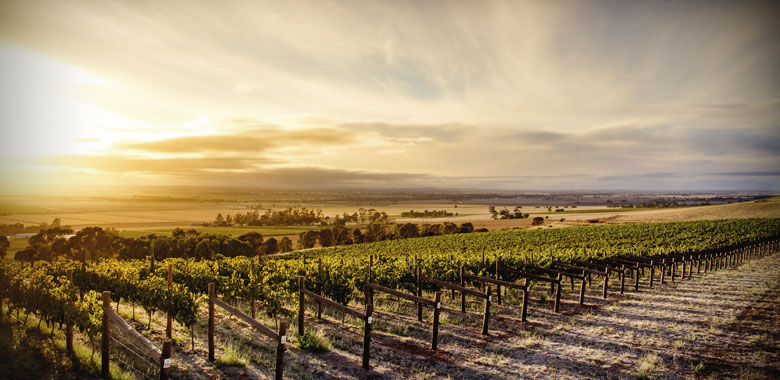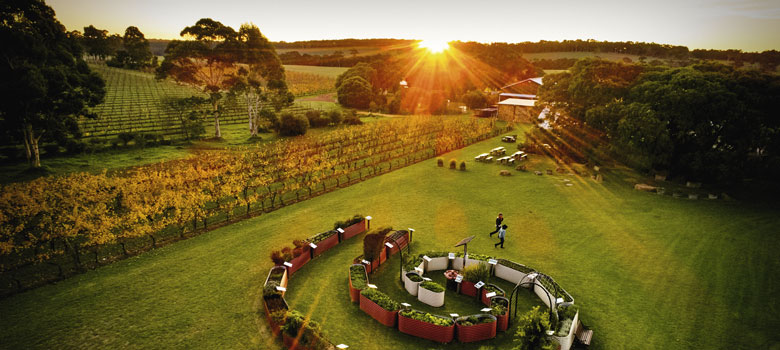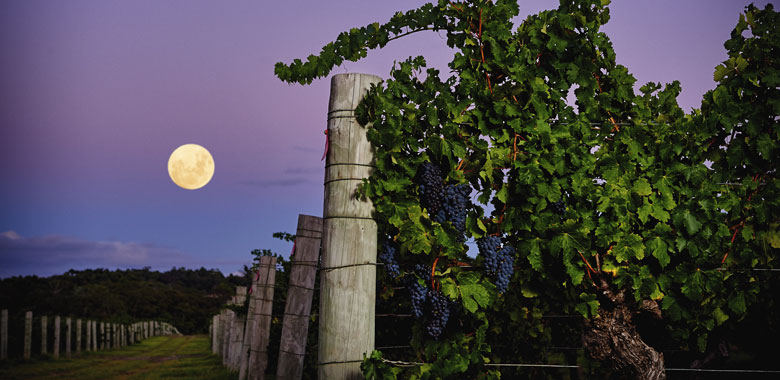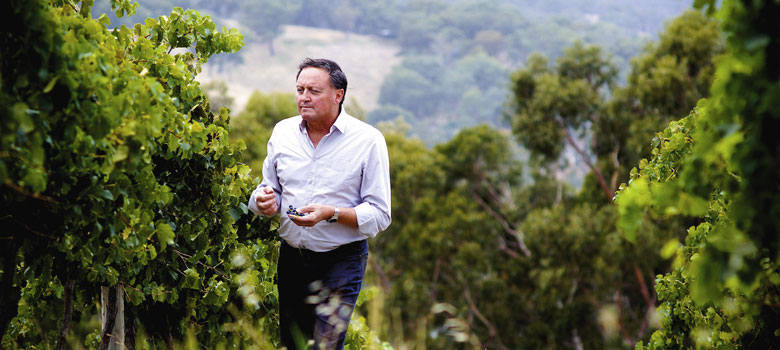
Wine
Innovating wine: the groundbreakers
From developing new vineyard techniques to unleashing varietal potential, these individuals have conceived some of Australia’s greatest wine innovations.
Free of the regulatory controls that could stifle the development of what remains an essentially young, if 200-year-old wine industry, Australia has a proud, if perhaps obscure, record of innovation in wine.
Here’s an alphabetically sorted list of nine people I feel have contributed massively to Australian wine over the last 30 years or are about to do so. As you will see, their influence is either still relevant or yet to be fully experienced.

Will Berliner, Cloudburst
As far as wine is concerned at least, Will Berliner only does things by extremes. He doesn’t like machines and is deeply interested in sustainability, so his close-planted Margaret River vineyard is fully biodynamic and entirely operated by hand. Every single vine is subject to extraordinary attention. Start asking about the soils and he’ll dig you a hole. In my experience, Cloudburst pushes the limits of what is possible with total viticultural commitment in Australia. Its wines are typically multi-layered, profoundly intense and vivacious, revealing an elegance and gentle charm that belies their depth of flavour. Berliner’s are ground-breaking wines, if only for that they handsomely enlarge upon what is considered possible in Margaret River and because they have shattered the region’s previous imagined ceiling of price.
Chalmers family
For generations, with the exception of a few significant varieties like Riesling and Semillon, Australian wine did have a monochromatically French varietal composition. Inspired by Dr Rod Bonfiglioli, two generations of Chalmers have, since 2000, done much to bring an Italian accent to this industry. The family’s relationship with two of Italy’s most important nurseries, VCR and the Matura group, has seen the introduction of around 70 Italian varieties and clones for Australian makers to select from and trial. Now operating a smaller version of Chalmers Nurseries out of Merbein (Vic), the family has also created a spectrum of wines from these grapes – some commercial and some purely experimental – which have dramatically increased Australia’s knowledge base about how these newcomer varieties fare and are best handled in local conditions. They do so in a way that is deeply carbon-conscious and sustainable, only imparting winemaking intervention when it’s absolutely needed.
Michael Corbett
Here’s a tip for the future, based on my view that this guy is already leading the pack of winemakers with an eye towards the natural and a leaning towards perfume and texture. Under a trio of ranges – Vanguardist, La Petite Vanguard and Sanglier (the last two of which sport riotous labels) – Michael Corbett delivers a technically perfect collection of vivacious wines from Clare, McLaren Vale and the Adelaide Hills designed solely to partner with his favourite cuisines. Content not to compete against classic styles, he’s taking a ‘natural’ approach to craft small volumes of unfined, unfiltered textural and perfumed wines with minimal intervention and preservative. He uses significant whole bunch ferments when appropriate with reds, and skin contact with whites, again when appropriate. His are not sold as natural wines, so I’ll leave it there. More importantly, they work. Having tasted most recent vintages, I’d say that their sense of expression, feel and balance makes them artisan wines of the highest standard. And their technical soundness, obvious without any apparent squeakiness, is just something that might occur to you later on. My money is on this guy taking Australian wine somewhere quite compelling.
Brian Croser
It’s impossible to write this list without including Brian Croser. During the 1970s and 1980s, he was responsible for writing much of the textbook for Australian winemakers to go about their business, as well as playing massive roles in the analysis of fruit and wine quality control. In my first role in wine, working for Dan Murphy in his Prahran cellars, I’d spend hours debating Rieslings with customers and staff as to whether or not Croser’s famous R2 yeast was responsible for their aromatic profiles. Croser relentlessly pursued ideas that made sense to him although his innovation of placing barrels of maturing red wine in Adelaide Hills cool stores has not stood the test of time. In my view, Croser’s great and lasting innovation – which alone would see him included here – was the way in which he changed the face of Australian Riesling (then our leading white wine variety) with the 1975 Hardy’s Siegersdorf. Harvested significantly riper than the John Vickery-inspired benchmarks of the day, Croser then fermented it long and cool, under pressurised carbon dioxide, and left it very marginally sweet. The wine was almost shockingly aromatic and flavoursome; it turned Australian wine on its head. Croser’s changing of the rules 45 years ago largely defined Australian Riesling (although he later fermented it drier at Petaluma) until the modern trends of skin contact and extended lees contacts now adopted by some to varying levels of success.

Vanya Cullen
Much has been said and written about Vanya Cullen’s eminent status as an international champion of the biodynamic cause, but that’s not why she’s included in this list. In my view she has achieved something far more important – she showed Australian winemakers how to make red wine with proper world-class tannic structure. Many of the techniques and approaches we now take for granted in the development of structure in Cabernet were fine-tuned in Australian conditions by Vanya Cullen, whose wines from the mid 1990s through the first decade of this century revealed a progressively more sophisticated and seamless marriage of texture with fruit. Her approach delivered strength without the clunkiness and rawness that for decades was considered to be structure in this country. Tannins could be textural and yet tight-grained, ethereal and still firm. This was the missing link for most Australian makers of Cabernet, and Cullen was right at the sharp end of this essential step forward.
Darren De Bortoli
It was 1985, it was the Victorian International Exhibition of Wine, known as VIEW 85 for short and well do I remember the smile that never left Darren De Bortoli’s face, not even for a moment. For several days, the De Bortoli stand was packed four or five deep as winemaker Darren and marketing sister Leanne wowed the hearts and palates of the wildly enthusiastic crowd of sucrose-deprived Melburnians with pour after pour of their impossibly sweet and luscious ‘1982 Semillon Sauterne’. It was a highlight of the show, even if it didn't win its sweet white class in the international wine judging which accompanied the event. De Bortoli recalls being told there was no way he had won the trophy, since the successful wine was finer, more restrained and more elegant; it turned out to be his 1983 vintage. Later in 1990 the wine was rebadged as Noble One. Having noticed some botrytis infection in a patch of Pedro Ximines in 1981, De Bortoli deliberately left out both Pedro and Semillon the following year, despite local growers telling him he was crazy. The rest is history. Australians immediately changed their views about indigenous sweet wine, Griffith had a new industry and dentists over Australia began placing new orders for diamond drills.
Michael Dhillon
Now for something out of left field. Since his father, Bill, set up Bindi in Victoria’s Macedon Ranges in the 1980s, Michael Dhillon has overseen a steady expansion and ongoing development of the property’s vineyards and winery. Today, with eight different sites – each located on the original property – at his disposal, Dhillon owns an extraordinary microcosm of Burgundy-inspired landscape within one of Australia’s coolest wine regions. His two latest sites are turning the expectation of Australian Pinot Noir on its heads. Over the summer of 2012/2013, Dhillon began to survey and work the soil of what is now his Darshan vineyard, after the Indian name that his father dropped in Australia, becoming ‘Bill’. A mere acre in size, it’s largely planted in rows 1.1 m apart, with vines planted at 80 cm intervals. A small section is planted at double that density – a staggering 22,600 vines per hectare. Two years later, on another site named Block 8, Dhillon planted another 1.9 acres in identical fashion. His objective, which he’s now finding the sites deliver without much manipulation, is for each vine to deliver around 400-500 grams of fruit! What kind of wine do you get with that? The nearest thing this country has produced to Chambertin, that’s what. Dhillon will release the first wines around 2022/2023. There will be around 150 cases of each. These are game-changing wines.

Joe Grilli
Joe Grilli is the most innovative Australian winemaker ever. Big call? Not when you look at his extraordinary list of innovations. Ever since the early 1980s, when he took over his family’s operations in the Adelaide Plains, Grilli has found ways to make wines of incredible international style and quality from whatever materials he had at hand. To make luscious Germanic late-harvested botrytis-affected Riesling he would first harvest the fruit and then spray on the botrytis, making the wine some weeks later. To reproduce the style and structure of some of his favourite Italian reds, he was the first to harvest the grapes, then letting them dry out a little in 'amarone' fashion before turning them into wine. To make an elegant cool-climate Cabernet Sauvignon from his hot Adelaide Plains site, he pruned its first crop onto the ground and waited for a second crop to ripen some months later. The results were unbelievable. To make an unusually complex and mature sparkling red, he makes a base wine into which he tips a collection of old reds and vintage ports he buys in bottle at auction. For years he has sold his blend of Shiraz and Sangiovese into Italy and for even longer he has made a dry-ish wine from Colombard that is substantially better than the grape was ever supposed to be. He has also perfected a Fronti that is part traditional Australian Muscat, part Madeira and part Vin Santo. Of course, he has!
Jeff Grosset
It took Jeff Grosset to show the world that the traditionally bone-dry expression of Australian Riesling which nobody outside this country then actually drank, was an acutely valid and valuable expression of one of Europe’s most treasured wine varieties. In 1998, Grosset was named the inaugural Riesling Winemaker of the Year at the Riesling summit held in Hamburg, Germany, elected by a panel that included a number of Germany's leading Riesling makers. Grosset, who in the lineage of John Vickery and Brian Croser, has continued the refinement of Australian Riesling with the subtle introduction of texture and backbone, has continued to exhaust the last molecule of fermentable sugar in his benchmark Polish Hill and Springvale Rieslings. One of the first to seek to tease out every bit of individuality from high-end Riesling sites, Grosset has long been a champion of sustainable vineyard practices. He was also a major driving force behind the collective decision of Clare Valley winemakers to release their 2000 vintage wines under the Stelvin screwcap seal.
Phillip Jones
No Australian winemaker has done more to elevate the standard of local Pinot Noir and preach its virtue the world over than Phillip Jones. While he has perhaps from time to time over-extended himself with other sites, his wines from the dry-grown home Bass Phillip Estate vineyard near Leongatha, Victoria, have justly built an international level of awareness below only the finest domains of Burgundy. Despite some very impressive prices, they are typically snapped up by a global cadre of buyers who jealously guard their access to the wines. To this point in time, Bass Phillip’s leading trio of Reserve, Premium and Estate Pinot Noirs (the first two especially) have owned the category of high-end Australian Pinot. All of which is even more remarkable when it’s considered that the site was first planted to emulate what was then Jones’ favourite wine, Chateau Ducru-Beaucaillou. Thanks to Phillip Jones, would-be Australian growers of world class Pinot have a market to sell into plus the ability to get a realistic and sustainable price for their wines.
Tony Jordan
One of the finest wine scientists this country has produced, Tony Jordan, who passed away in 2019, earns his place in this list for something entirely unscientific. In 1985 he decided that Australia could indeed have a premium sparkling wine industry and that he would create it. Until Jordan made the call to focus on blending together dozens of parcels of cooler climate fruit from the classic Champagne varieties under what has evolved into the Chandon brand, Australian sparkling wine represented little more than an apologetic collection of ultra-dry offerings from a bizarre collection of relatively neutral grapes such as Ugni Blanc (Trebbiano), Ondenc and Chasselas, each of whose wines demanded extensive cellaring just to become vaguely interesting. With something like 27 different vineyards across several regions and states contributing to the first Domaine Chandon wines, Jordan introduced a classically Champenois philosophy to the making and blending of Australian sparkling wine, in doing so setting the stage for all others to follow. The notion that people would pay more for Australian sparkling wine than the cheapest Champagne was considered absurd. That’s the ceiling that Tony Jordan smashed through – by delivering both substance and style.
Rick Kinzbrunner
Few winemakers understand the role played by time in the conception of great wine as clearly as Rick Kinzbrunner, who has redefined Australian expectations of style and quality over three decades with Pinot Noir, Chardonnay, Shiraz and Nebbiolo. It’s of course for his greatest wine, Giaconda Chardonnay, that Kinzbrunner is best known. From the deliberate selection of a cooler south-facing site near Beechworth to provide the length of ripening season he was chasing to the slow, measured introduction of different cellar techniques to build the complexity and stamp we now associated with Giaconda, Kinzbrunner has patiently experimented, observed and calmly accumulated a huge base of winemaking knowledge that is reflected in what is still, more than 30 years after this first releases, a winemaking journey of discovery. One of the most over-used wine terms is ‘icon’, but there remains daylight between Giaconda’s iconic Chardonnay and this country’s next best. Why, then, is this wine not more emulated? Because it’s more than just the site. Kinzbrunner is our ongoing reminder of the critical human element in terroir…
Dave Powell
It doesn’t fall to too many people to fundamentally change the wine from a world-famous wine region. Twice. While he is no longer associated with Torbreck, the wine brand he founded in the mid-1990s, this was the vehicle with which Dave Powell brought the Barossa Valley into the 21st century. Prior to Powell, there was a sameness about the Barossa’s red wines, even very best of them. Based around plush, ripe fruit and American cooperage, they never quite sat comfortably amongst the world’s finer reds – usually appearing simple, clunky and lacking complexity by comparison. It didn’t take long for Powell to re-cast the mould, creating a unique Torbreck stamp of heady perfume, musky spices, fruit opulence without heaviness, tight-grained French oak influence and smoky, charcuterie-like complexity that with time could border on savoury. Barossa Shiraz enjoyed its makeover, with Viognier sometimes contributing spice and structure to old vine fruit. Act Two was to refashion the Barossa GSM, to which Powell applied a similar Rhône-inspired philosophy. Prior to this, the class was sad, porty and often dirty. With the heady, fragrant unoaked Cuvée Juveniles blend and the (year older) The Steading red, which was essentially the same wine matured in older oak, Powell laid the keel for the modern Australian GSM and its variants.